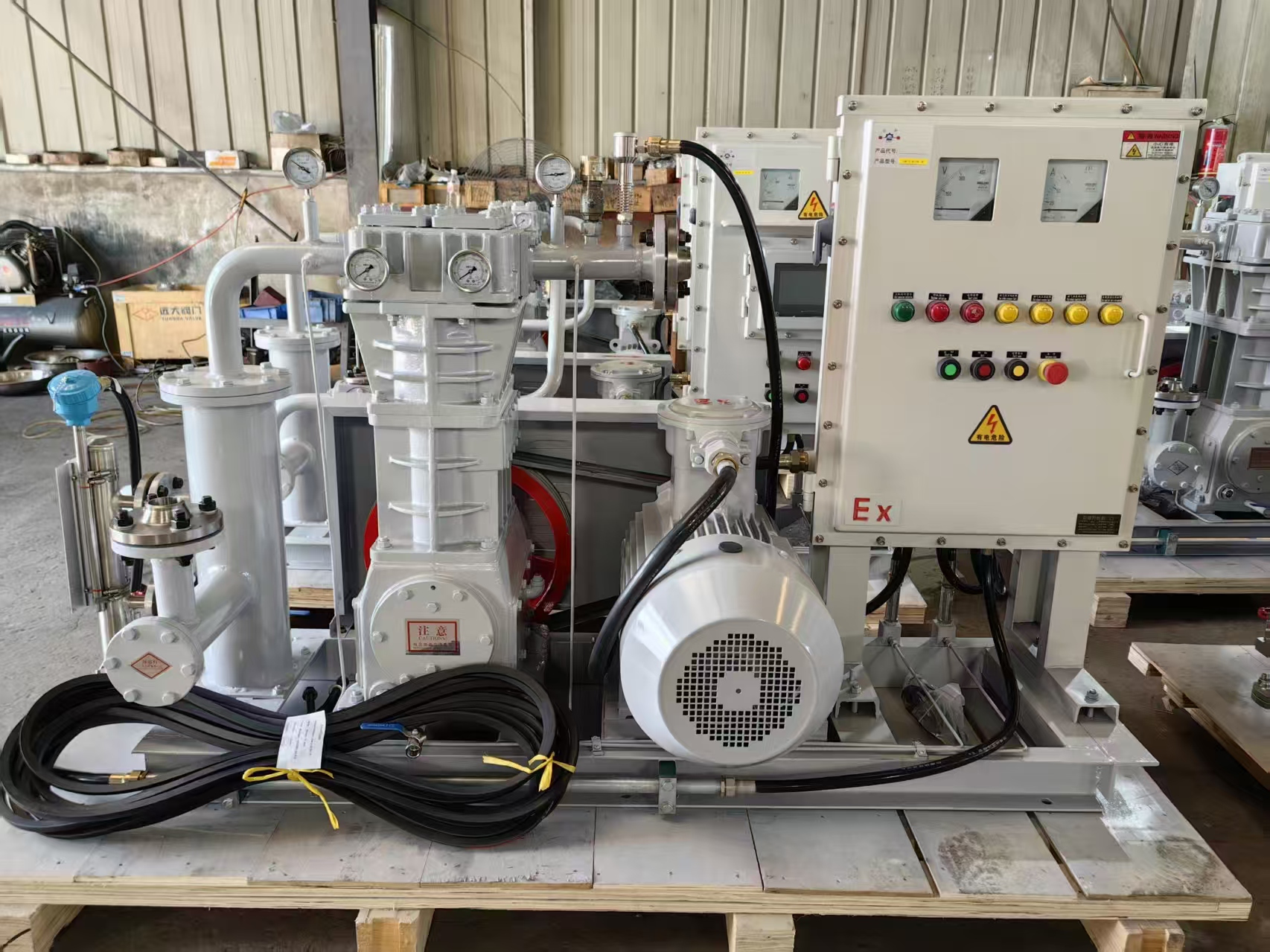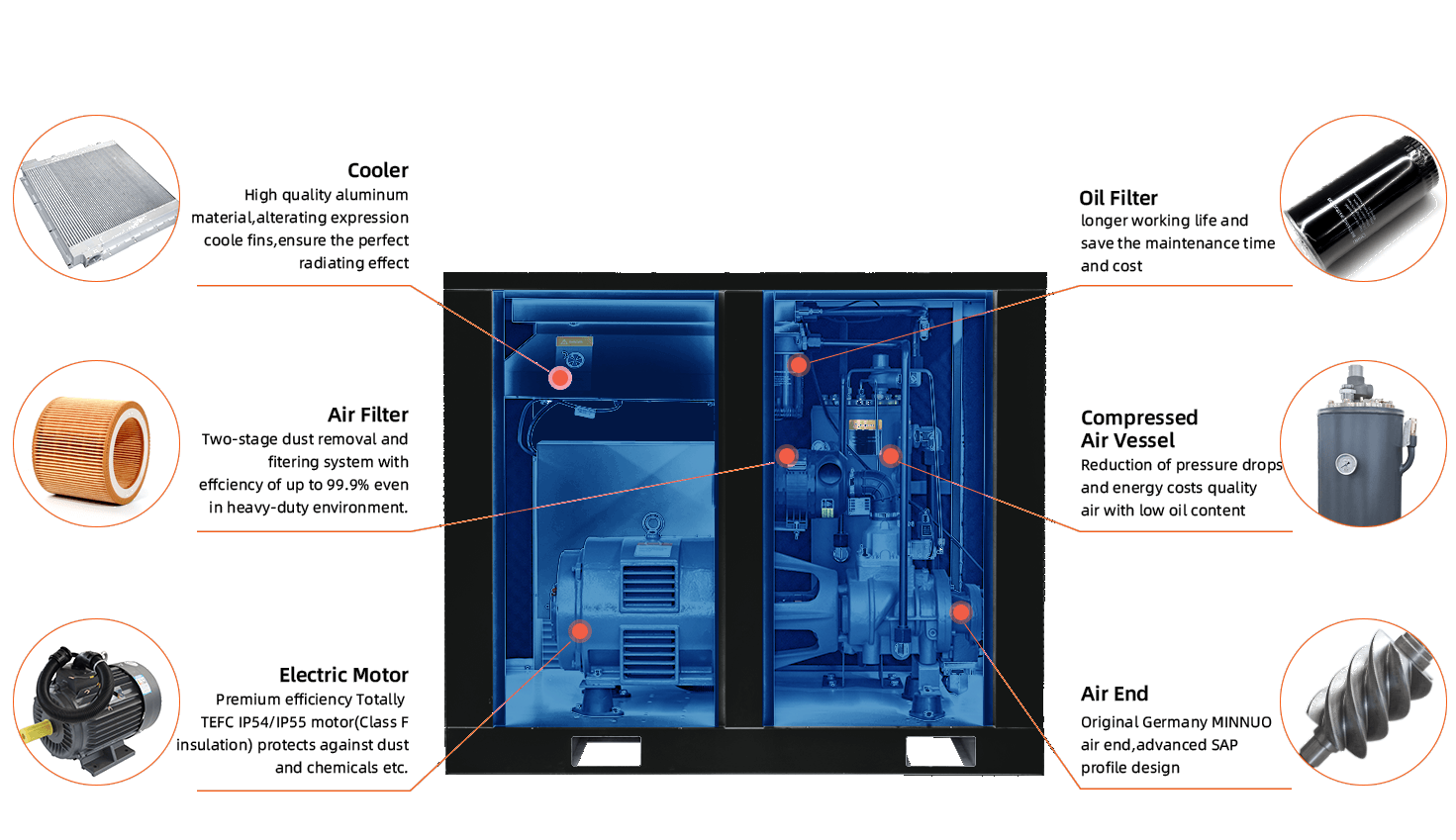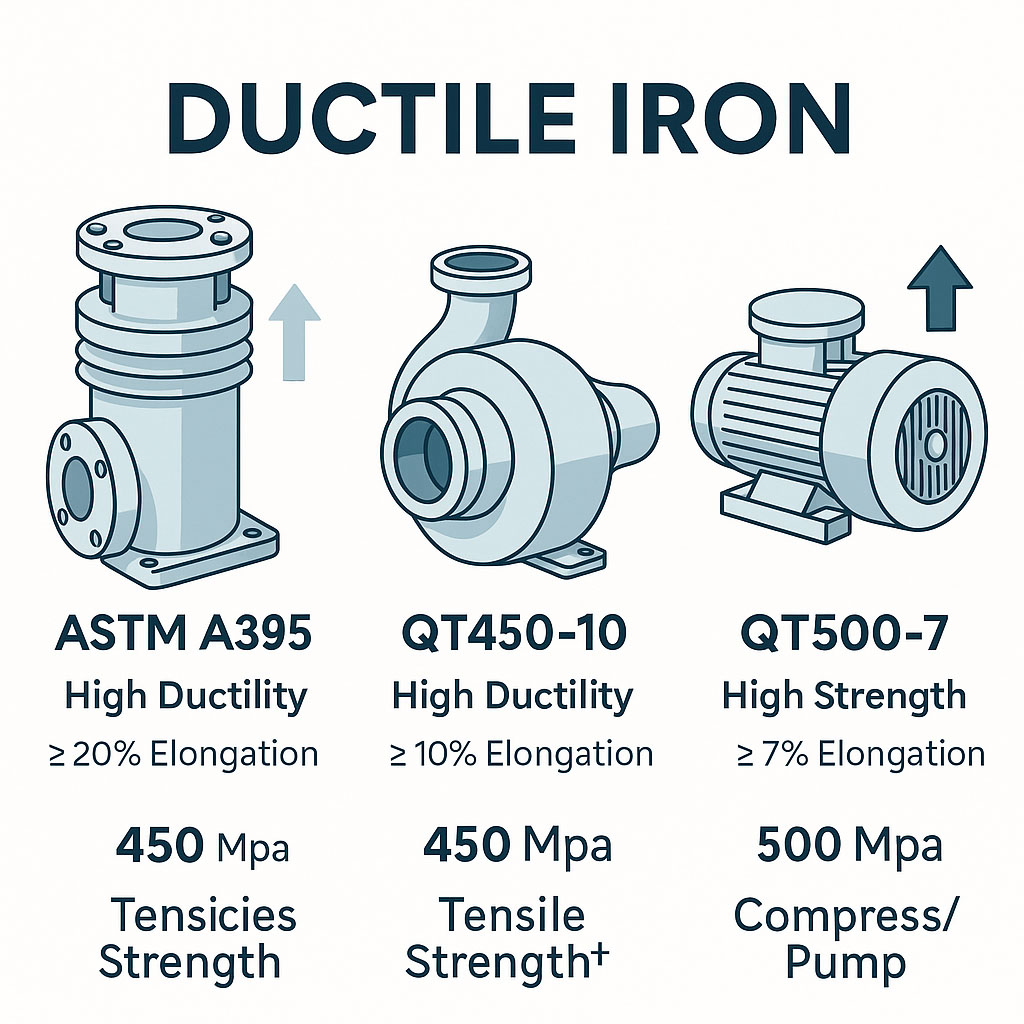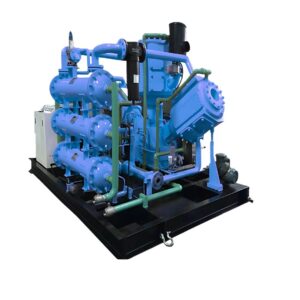Когда промышленные процессы требуют подачи газа под высоким давлением, поршневые газовые компрессоры-так называемые поршневые компрессоры - часто оправдывают свое название. В отличие от винтовых, они отличаются высокой степенью сжатия, эффективностью работы в автономном режиме и универсальностью по типу газа. Но при выборе подходящей модели необходимо соблюдать баланс между технологией, размерами, материалами и потребностями в обслуживании.
1. Рециркуляционный и винтовой: Знайте свою технологию
-
Возможность работы под давлением: Рециркуляционные компрессоры обеспечивают гораздо более высокие давления (часто превышающий 1200 PSI или ~80 бар), в то время как винтовые компрессоры обычно ограничиваются ~250-600 PSIG
-
Рабочий цикл и шум: Винтовые компрессоры предлагают непрерывная работа и более плавная, тихая производительность. Рециркуляционные агрегаты работают в циклическом режиме и создают больше вибраций, хотя они лучше работают в условиях частичной нагрузки. .
-
Приспособление для нанесения: Рециркуляционные агрегаты отлично подходят для компрессорных установок высокого давления, периодической работы или установки на салазках - идеальное решение для промышленные поршневые компрессоры в нефтегазовой отрасли, на технологических установках или в линиях повышения концентрации азота.
🛠 Исследуйте весь Keep-Win [ассортимент поршневых газовых компрессоров].(https://keep-win.com/products/reciprocating-gas-compressors), разработанный с учетом требований высокого давления и многоступенчатости.
2. Определение размеров компрессора: Избегайте занижения или завышения проектной мощности
Правильный выбор размера обеспечивает надежность и энергоэффективность. Вот как правильно подобрать размер:
-
Определите четкие требования к процессу: Определите требуемый расход (CFM/Нм³/ч) и давление нагнетания. Учитывайте пиковую потребность и планы по расширению.
-
Фактор современности и запас прочности: Для нескольких одновременных пользователей следует принять около 20-30%, затем добавить коэффициент безопасности 25-50%, чтобы избежать падения давления или занижения.
-
Конструкция цилиндра и его крепление: Большинство одноступенчатых поршневых компрессоров рассчитаны на рабочий цикл 50% - это означает, что им требуются более мощные двигатели для охлаждения и предотвращения перегрева.
Ключевые параметры: требуемый PSI/бар, свободная подача воздуха (CFM/Нм³/ч), рабочий цикл и источник энергии.
3. Свойства газов и совместимость материалов
Рециркуляционные репрессоры должны выдерживать специфические свойства газа, особенно агрессивного или высокочистого. Рассмотрим:
-
Коррозионные или абразивные газы могут потребоваться поршни из нержавеющей стали, вкладыши и специальные материалы для клапанов.
-
Конструкция уплотнения необходимо избегать загрязнения носителя Двухступенчатые или продувочные системы уплотнений необходимы для критически важных по чистоте или опасных газов.
-
Варианты API 618 обычно используются в нефтехимической или криогенной промышленности и состоят из высокопрочных стержней и кованых деталей.
В компании Keep-Win наши компрессоры настраиваются под технологический газ, высококоррозионную среду или стандарты высокой чистоты, что гарантирует их пригодность и надежность в любой области применения.
4. Требования к пульсации, вибрации и фундаменту
Компрессоры с поршневым приводом создают пульсации давления и вибрационные контуры, если трубопроводы и опоры не спроектированы должным образом. Пренебрежение пульсационными бутылками, опорами, неизолированными фундаментами или предварительной нагрузкой на шток/поршень может привести к механическим повреждениям или сокращению срока службы уплотнений. Надлежащий акустико-механический анализ и моделирование TAPS являются типичными шагами для обеспечения долгосрочной целостности
Keep-Win предлагает конструкции салазок по стандарту API-618 с полностью разработанными схемами подавления пульсаций и фундамента, гарантирующими надежность работы в полевых условиях.
5. Планирование технического обслуживания: Используйте проверенный контрольный список
Рециркуляционные компрессоры требуют более тщательного технического обслуживания, но правильное его проведение обеспечивает бесперебойную работу и экономию энергии:
Основные моменты профилактического контрольного списка:
-
Ежедневно или перед стартом: Проверьте уровень смазки, слейте конденсатПроверьте, нет ли утечек или необычных вибраций/шумов.
-
Еженедельно: Проверьте натяжение ремняОчищайте всасывающие фильтры, следите за работой нагнетательного клапана.
-
Ежемесячно и ежеквартально: Заменить масляные фильтрыОчистите сетчатые фильтры, проверьте зазор в цилиндре и момент затяжки крейцкопфа.
-
Ежегодно: Замените поршневые кольца, проведите испытания на давление отключения, выполните диагностику вибрации на уровне оборотов FAT.
Компрессоры Keep-Win поставляются с полным графиком технического обслуживания, схемами деталей и сервисными комплектами, готовыми к вводу в эксплуатацию.
6. Компромиссы между стоимостью жизненного цикла и надежностью
Хотя поршневые компрессоры, как правило, требуют больших затрат на обслуживание, чем винтовые, они компенсируют это за счет:
-
Длительный капитальный ремонт в течение нескольких лет (стержни, клапаны и кольца рассчитаны на длительный срок службы)
-
Превосходная эффективность сжатия вблизи номинальных условий
-
Простая интеграция для многоступенчатых систем и нескольких газовых контуров
Винтовые агрегаты позволяют экономить на трудозатратах, но при давлении выше ~8 бар или рабочих циклах с большими циклическими нагрузками поршневые компрессоры часто обеспечивают лучшую экономичность на протяжении всего жизненного цикла.
7. Функции управления и интеграции
Современные поршневые компрессоры оснащены интеллектуальными системами управления, регулируемыми разгрузочными устройствами и дистанционным мониторингом. Ищите системы, предлагающие:
-
Загрузка/разгрузка или ступенчатая разгрузка
-
Встроенные контрольно-измерительные приборы и интеграция с ПЛК
-
Возможность обнаружения утечек и защита от перенапряжения
Фурнитура KEEPWORD включает в себя дополнительные Модули с поддержкой IoT для мониторинга и оповещений в режиме реального времени - оптимизация обслуживания и времени работы без необходимости обхода полей.
Сводная таблица: Основные соображения по проектированию
| Тема | Почему это важно |
|---|---|
| Давление и расход | Соответствие системным требованиям и будущее расширение |
| Тип технологии | Рециркуляционные для периодического использования/высокого давления |
| Материалы и дизайн уплотнений | Избегайте проблем совместимости газов и обеспечивайте их чистоту |
| Пульсация и основание | Повышение механической целостности и снижение риска простоя |
| Планирование технического обслуживания | Следуйте контрольному списку для ежедневного и ежегодного ухода |
| Стоимость жизненного цикла | Отдайте предпочтение эффективности, а не простому первоначальному ценообразованию |
| Управление и интеграция | Обеспечивает бесперебойную работу благодаря логическому управлению |
Почему стоит выбрать пакеты решений Keep-Win
Выигрыш обеспечивает Соответствие требованиям API 618 и промышленный поршневой компрессор решения - от одноступенчатых до многоступенчатых конфигураций. Наши установки включают в себя механическую конструкцию, смягчение пульсаций, интеллектуальные модули управления и документированную поддержку по техническому обслуживанию. Узнайте больше на сайте:
-
[Серия цилиндрических газовых компрессоров](https://keep-win.com/products/reciprocating-gas-compressors)
-
[Комплекты для сжатия технологического газа](https://keep-win.com/products/process-gas-compressors)
Заключение
Выбор правильного поршневой газовый компрессор означает понимание давления, расхода, типа газа, механической конструкции и обслуживания в течение всего срока службы. При внимательном отношении к размерам, пульсациям и техническому обслуживанию эти компрессоры обеспечивают непревзойденную эффективность и надежность при работе в условиях высокого давления или периодической нагрузки.
Чтобы разработать систему, соответствующую уникальным характеристикам вашего предприятия, свяжитесь с командой газовых инженеров Keep-Win уже сегодня, чтобы получить индивидуальные рекомендации и надежное развертывание.











